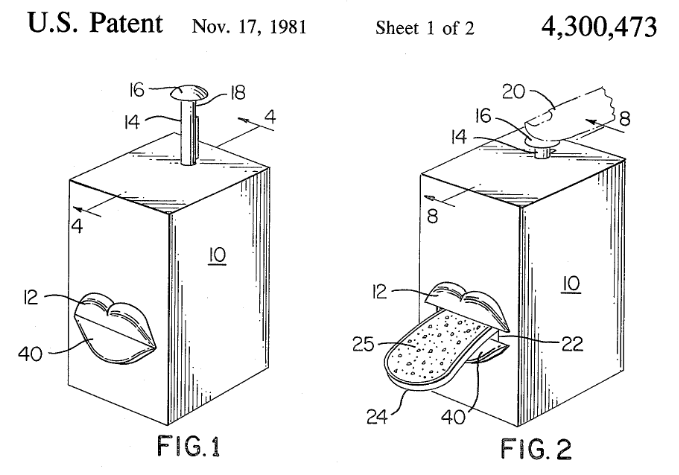In our world of pressure-sensitive, self-adhesive stamps, it seems strange anyone would think it normal to lick a postage stamp before mailing a letter. But that world has only existed for Americans since 1992, when the U.S. Post Office introduced them to the nation. After that, even the thought of licking stamps had all but disappeared within 13 years.
But before that time, licking stamps was a frequent activity. For most, it was the easiest way to affix the proof that the cost of postage to send a letter through the U.S. mail had been paid. Many Americans before the age of self-sticking stamps would agree it was an awful experience.
That's because the taste of the glue the U.S. Postal Service applied to the back of stamps to get them to stick to paper envelopes after they were moistened was, shall we say, unpleasant. That design failure created an opportunity for American inventors, who quickly found a ready market made of anyone who might otherwise have to regularly lick a lot of stamps.
Donald Poynter was one of those inventors, who was awarded U.S. Patent 4,300,473 for his unique solution to the problem of licking the bad-tasting glue on the back of postage stamps. He describes his innovation in the patent's background section:
The present invention relates to an apparatus for moistening the adhesive coating on a postage stamp, envelope or the like and more particularly concerns a novelty device for performing this function.
Due to the unpleasant taste of adhesive coatings placed upon postage stamps, envelopes and the like, many persons using such articles dislike licking the coating with their tongue. Many other persons object to licking stamps for reasons of health and sanitation or personal propensities. For these or other reasons, it is desirable to moisten the adhesive coating by means which do not include the use of the human mouth.
Further, many people obtain great satisfaction from novelty devices. Therefore, for many people, it is desirable to present an apparatus for performing the highly useful function of moistening adhesive coatings in a novelty arrangement.
We know. You were on board until you got to the part about people obtaining satisfaction from novelty devices, which comes across like a strange plot twist. Fortunately, the text of the patent's abstract tells us exactly what he he had in mind for the specific apparatus he envisioned for his invention:
Apparatus for moistening adhesive coatings on postage material and the like which includes an enclosure having a container of liquid therein. A plunger is provided to lift an absorbant applicator from the liquid and pass the applicator through an opening in the side of the enclosure. A closure member for the opening is opened in response to the applicator movement. The applicator may be in the form of a human tongue and the closure may be in the form of a human lip.
And if that technical description doesn't do it for you, Figures 1 and 2 of the patent's illustration will complete the picture.
Basically, when a user depresses the button as shown in Figure 2, the "lips" on the box in Figure 1 open to reveal a tongue-shaped sponge that has been pre-moistened in an internal water reservoir. The sponge provided the moisture needed to activate the glue on the back of a postage stamp so it would stick to an envelope.
The advent of the self-adhesive stamp technology has made Poynter's invention obsolete. All the same, it's a testimony to the world that made the invention of the stamp-licking tongue depressor seem like both a good idea and a marketable product for an all-too-brief time.
From the Inventions in Everything Archives
We don't have any other examples of inventions that have become fully obsolete in the archives, but we do have the following discussions and essays on the topic of obsolescence.
